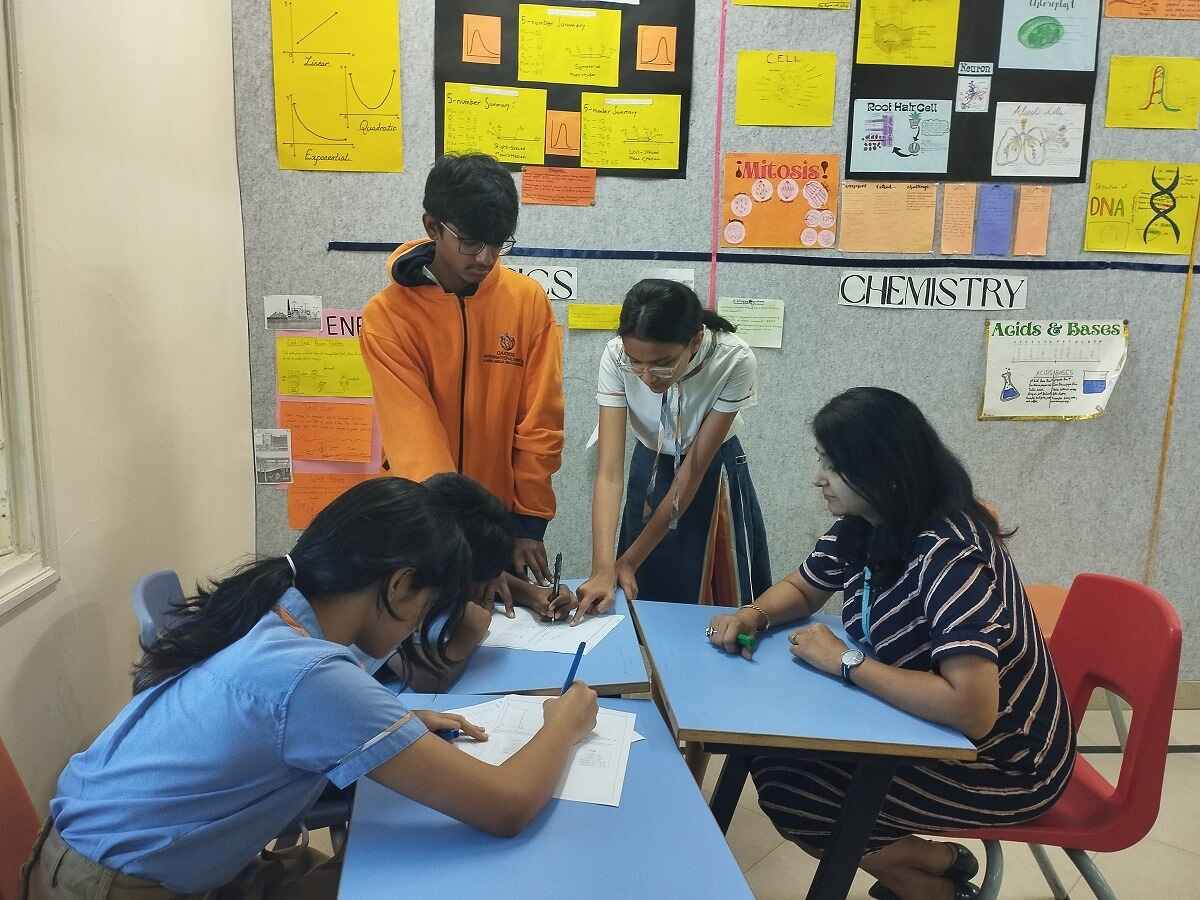Connecting the Dots: Guiding Students into Inquiry
- 19 March 2023

Have you ever wondered ‘Why is the sine/cos/tan value of an angle the same in a right-angled triangle irrespective of the side lengths?’
MYP ninth graders at Oakridge International School, Gachibowli have found an answer to this.
While learning Trigonometry as part of the current unit, the learners identified this ‘Wonder’ question. The learners were then engaged in a task which would lead to the answer to their question. The task was based on sequenced questioning which gradually enabled the students to make connections with their prior knowledge and get to the answer themselves.
Why Sequenced Questioning?
Asking students to think and make connections may work for some but not all. But using a strategy which guides the student in inquiry makes the learning process more engaging.
Learners often learn concepts as discrete entities. These concepts are often the building blocks for big ideas. When they learn these concepts in isolation, they learn about the facts around them but do not understand their relevance when it comes to the big idea. This task made the thinking process visible where students understand the relevance of a concept and how it leads to the understanding of other concepts. They were able to apply their critical thinking skills to connect the dots and understand the relationship between two concepts thus demonstrating transfer of knowledge to unfamiliar situations.
Building Critical Thinking Skills
Approaches to learning skills (ATLS) can be learned, taught and developed incrementally. When thinking is practiced regularly in different ways across disciplines, it becomes a habit and a culture in the class. This culture then creates lifelong learners with curious minds.
It was a great learning experience for the students and the learners felt accomplished.
Ms Sonu Parik
MYP Math Facilitator and Subject Expert